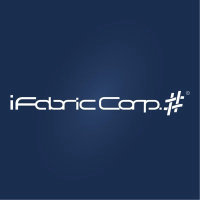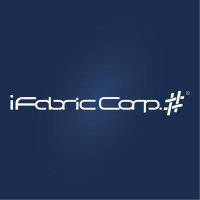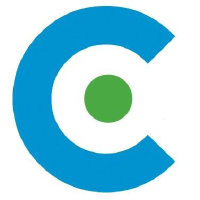
iFabric Corp
TSX:IFA


| US |

|
Johnson & Johnson
NYSE:JNJ
|
Pharmaceuticals
|
| US |

|
Berkshire Hathaway Inc
NYSE:BRK.A
|
Financial Services
|
| US |

|
Bank of America Corp
NYSE:BAC
|
Banking
|
| US |

|
Mastercard Inc
NYSE:MA
|
Technology
|
| US |

|
UnitedHealth Group Inc
NYSE:UNH
|
Health Care
|
| US |

|
Exxon Mobil Corp
NYSE:XOM
|
Energy
|
| US |

|
Pfizer Inc
NYSE:PFE
|
Pharmaceuticals
|
| US |

|
Palantir Technologies Inc
NYSE:PLTR
|
Technology
|
| US |

|
Nike Inc
NYSE:NKE
|
Textiles, Apparel & Luxury Goods
|
| US |

|
Visa Inc
NYSE:V
|
Technology
|
| CN |

|
Alibaba Group Holding Ltd
NYSE:BABA
|
Retail
|
| US |

|
JPMorgan Chase & Co
NYSE:JPM
|
Banking
|
| US |

|
Coca-Cola Co
NYSE:KO
|
Beverages
|
| US |

|
Walmart Inc
NYSE:WMT
|
Retail
|
| US |

|
Verizon Communications Inc
NYSE:VZ
|
Telecommunication
|
| US |

|
Chevron Corp
NYSE:CVX
|
Energy
|
Utilize notes to systematically review your investment decisions. By reflecting on past outcomes, you can discern effective strategies and identify those that underperformed. This continuous feedback loop enables you to adapt and refine your approach, optimizing for future success.
Each note serves as a learning point, offering insights into your decision-making processes. Over time, you'll accumulate a personalized database of knowledge, enhancing your ability to make informed decisions quickly and effectively.
With a comprehensive record of your investment history at your fingertips, you can compare current opportunities against past experiences. This not only bolsters your confidence but also ensures that each decision is grounded in a well-documented rationale.
Do you really want to delete this note?
This action cannot be undone.

| 52 Week Range |
0.89
1.39
|
| Price Target |
|
We'll email you a reminder when the closing price reaches CAD.
Choose the stock you wish to monitor with a price alert.

|
Johnson & Johnson
NYSE:JNJ
|
US |

|
Berkshire Hathaway Inc
NYSE:BRK.A
|
US |

|
Bank of America Corp
NYSE:BAC
|
US |

|
Mastercard Inc
NYSE:MA
|
US |

|
UnitedHealth Group Inc
NYSE:UNH
|
US |

|
Exxon Mobil Corp
NYSE:XOM
|
US |

|
Pfizer Inc
NYSE:PFE
|
US |

|
Palantir Technologies Inc
NYSE:PLTR
|
US |

|
Nike Inc
NYSE:NKE
|
US |

|
Visa Inc
NYSE:V
|
US |

|
Alibaba Group Holding Ltd
NYSE:BABA
|
CN |

|
JPMorgan Chase & Co
NYSE:JPM
|
US |

|
Coca-Cola Co
NYSE:KO
|
US |

|
Walmart Inc
NYSE:WMT
|
US |

|
Verizon Communications Inc
NYSE:VZ
|
US |

|
Chevron Corp
NYSE:CVX
|
US |
This alert will be permanently deleted.
iFabric Corp
iFabric Corp. engages in the designing, marketing and sale of intimate apparel. The company is headquartered in Markham, Ontario and currently employs 28 full-time employees. The company went IPO on 2007-08-28. The company provides intelligent properties, including antiviral and antibacterial characteristics, water-repellence, and ultraviolet protection. The Company’s segments include Intimate Apparel, Intelligent Fabrics and Other. The Intimate Apparel segment includes the design and distribution of women’s intimate apparel and accessories. The Intelligent Fabrics segment includes the development and distribution of products and treatments that are suitable for application to textiles, plastics, liquids, and hard surfaces. The Other segment includes leasing of property to group companies, related parties and third parties. The firm offers a variety of products and services through its subsidiaries, Intelligent Fabric Technologies (North America) Inc. (IFTNA) and Coconut Grove Pads Inc. (Coconut Grove).

iFabric Corp. engages in the designing, marketing and sale of intimate apparel. The company is headquartered in Markham, Ontario and currently employs 28 full-time employees. The company went IPO on 2007-08-28. The company provides intelligent properties, including antiviral and antibacterial characteristics, water-repellence, and ultraviolet protection. The Company’s segments include Intimate Apparel, Intelligent Fabrics and Other. The Intimate Apparel segment includes the design and distribution of women’s intimate apparel and accessories. The Intelligent Fabrics segment includes the development and distribution of products and treatments that are suitable for application to textiles, plastics, liquids, and hard surfaces. The Other segment includes leasing of property to group companies, related parties and third parties. The firm offers a variety of products and services through its subsidiaries, Intelligent Fabric Technologies (North America) Inc. (IFTNA) and Coconut Grove Pads Inc. (Coconut Grove).
This earnings call has not been analyzed yet.
If you’d like us to analyze this earnings call, click the "Request Earnings Call Analysis" button below.





































